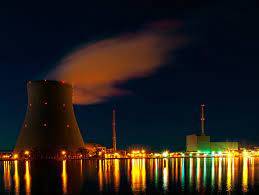
Pakistan has been in an energy crisis since the time of its independence and till date has faced three blackouts - in 2015, 2021 and the third one recently on January 23 2022. The country suffered power outage for 20 hours followed by frequent spells of load shedding the day following.
With the state's foot entangled in poor medical facilities, hospitals and caring centers in the areas such as that of Balochistan and Sindh also have to bear the cost of the poor maintenance of the power grid. With the majority of factories shutting down, no service connection and internet, citizens were teleported to the stone age. The executives, being aware of the ongoing energy crisis, earlier issued orders under which the markets, eateries and restaurants were bound to be closed by 8 pm hoping that Pakistan would save $273 million.
However, even if it happened it is far less than what is needed. A total of $3.7 of state reserves, long overdue debts, and a downward sloping economy, remain to be huge impediments for Pakistan to solve for its energy crisis.
In the current situation, Pakistan gets 60% of energy from fossil fuels, 27% from hydroelectric power sources and nuclear energy roughly contributes about 10%. Pakistan currently has 4 nuclear plants installed out of which one remains shut and the total capacity of the remaining nuclear plants is 3530 MW.
Over the years, the state has developed various relevant bodies in regards to the management of Nuclear Energy, the foremost remains the National Electric Power Regulation Authority (NEPRA) and the Pakistan Atomic Energy Commission (PAEC) inaugurated under President Zulfikar Ali Bhutto in 1972. Unfortunately, both of these institutions have remained a victim to political influences and bias over the time hindering its own authority to work.
Recent flooding, increased spells of high temperature, melting glaciers, and rising sea levels clearly indicate that Pakistan stands as a target of climate change. The issue of climate change stems from the increased dependence on fossil fuels for energy production. The burning of fossil fuels for energy leads to the emission of greenhouse gasses such as ozone, sulfur dioxide, carbon monoxide, and nitrogen dioxide which not only warms the atmosphere but also contributes to an increasing percentage of lung cancer and an estimate of 100 million deaths globally.
Not only is Lahore ruling the top charts of the poorest air index, but poor working conditions have killed 150 coal miners in 2022. Additionally renewable energy, unlike the political instability in Pakistan, is not consistent. Hydroelectric or solar supply is imperilled by the rise of climate change, consequently making it difficult to predict the number of rainy or sunny days.
In this energy crisis, we may have to resort to nuclear energy. Why nuclear energy? Firstly let's cater the proposed arguments by the anti-nuclear activists. It is frequently implied that nuclear energy causes high deaths, storing its waste can be highly dangerous and the overall destruction caused by the past historical remnants. All nothing but fallacies. It is imperative to understand that it is of no greater good to release the waste of burning fossil fuels, inhaling it and suffering from bronchitis rather than storing nuclear waste underground. James Hansen, a
NASA scientist, who was the first one to bring global warming to public attention continues to be an advocate for expanding nuclear power rather than relying on fossil fuels. In addition to that, according to Nasa’s 2013 research, Nuclear energy has saved 1.8 million lives and stands last in the deaths per energy unit caused including the 1986 incident of Chernobyl, and Fukushima Daiichi.
These relics are to be more closely looked upon. The total direct deaths caused by radiation from Chernobyl are only 31. Moreover, the USSR had a slow and inefficient response to deal with the issue and was majorly indulged in saving image through media platforms. Many of these official statistics are speculated to be maneuvered as well through global media due to the ongoing cold-war.
Whereas, Fukushima daiichi led to 573 deaths but only 1 of them was among the direct causes of radiation while the rest accounted for the evacuation stress caused to people. In contrast to renewable energy causing 1 death every few decades, nuclear energy in its all time high would cause 1 death every 14 years.
With Pakistan enveloped by the blanket of smog every year, there is a need to conclude that fossil fuels are definitely not the way forward. It is high time that Pakistan plans to invest in the nuclear energy programme and tries to adapt models that of its neighboring countries.
It must ensure that the Nuclear Programme 2050 should not remain variable to Pakistani politics. Under this plan,Pakistan aims on constructing 32 nuclear power plants till 2050 and ensuring 40,000MW nuclear power generation.
According to the research conducted by Ghazala Yamin Jalil at the Institute of strategic studies in Pakistan, there are various challenges for Pakistan to develop an efficient nuclear power generation system.
Unlike India, Pakistan did not receive the waiver from Nuclear Suppliers Group (NSG) for civil nuclear cooperation due to being a victim of discrimination. However, On the Nuclear Security Index Pakistan has improved by 25 points.
In near time, Pakistan is going to run out of its indigenous oil reserves and domestic source of natural gas as predicted by the Oil and Gas Development Company Limited (OGDCL). Thus, for the country to sustain itself through turbulent times, it should invest in its think tanks if not directly nuclear energy so that competent people are brought together to aid the process of development.

